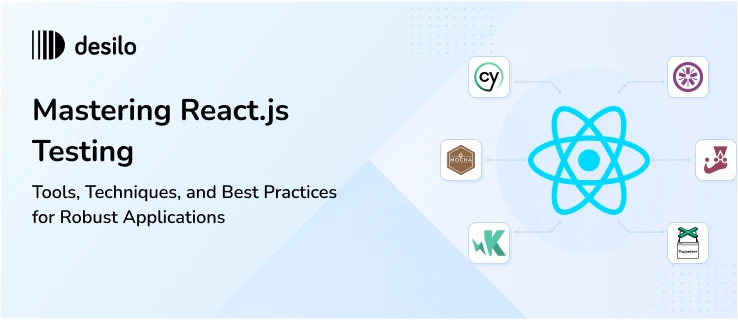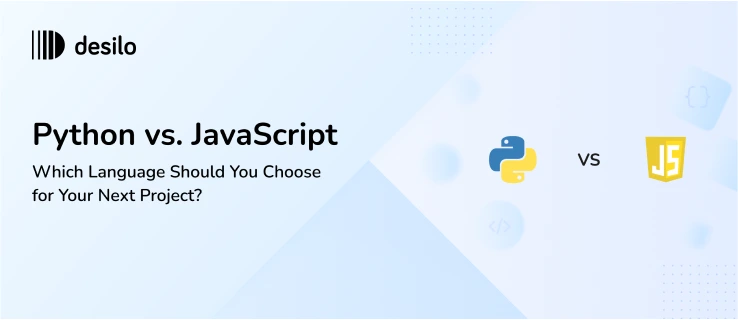Why Testing is Essential in React.js Development?
Why is Frontend Architecture Important?
1. Bug Prevention:
2. Improved Code Quality:
3. Ease of Refactoring:
4. User Satisfaction:
5. Documentation Through Tests:
React.js Testing Tools: An Overview
A strong testing setup is the backbone of robust React applications. Below are the most widely used tools:1. Jest
- Why Use Jest?: Jest provides built-in support for mocking, spies, assertions, and snapshot testing, requiring minimal configuration.
-
Key Features:
- Parallel test execution for speed.
- Snapshot testing to prevent UI regressions.
- Mocks and spies for function testing.
- Example: Testing a basic math function:
JavaScript
import { sum } from './math';
test('adds 1 + 2 to equal 3', () => {
expect(sum(1, 2)).toBe(3);
});
2. React Testing Library (RTL)
- Why Use RTL?: RTL ensures you test the behavior of your components as users experience them. This approach aligns tests closely with real-world use cases.
-
Key Features:
- Easy querying methods (getByText, getByRole, etc.).
- Focuses on accessibility and semantic HTML.
- ExampleExample: Testing a button click:
JavaScript
import { render, screen, fireEvent } from '@testing-library/react';
import Button from './Button';
test('button click triggers onClick event', () => {
const handleClick = jest.fn();
render(<Button onClick={handleClick}>Click Me</Button>);
fireEvent.click(screen.getByText('Click Me'));
expect(handleClick).toHaveBeenCalledTimes(1);
});
3. Cypress
- Why Use Cypress?: Cypress provides real-time feedback by simulating user interactions within an actual browser environment.
-
Key Features:
- Supports time-travel debugging.
- Tests complete user workflows, including navigation, forms, and AJAX calls.
- Example: Testing a login flow:
JavaScript
describe('Login Flow', () => {
it('logs in successfully', () => {
cy.visit('/login');
cy.get('input[name="username"]').type('testuser');
cy.get('input[name="password"]').type('password123');
cy.get('button[type="submit"]').click();
cy.url().should('include', '/dashboard');
});
});
Types of Tests in React Applications
React testing involves various types of tests tailored to address different aspects of the application:1. Unit Tests
- Why?: These tests ensure each component works as intended, independent of external dependencies.
- Example:
JavaScript
import { render } from '@testing-library/react';
import Header from './Header';
test('renders header title correctly', () => {
const { getByText } = render(
2. Integration Tests
- Why: They verify the combined behavior of components, catching issues that might arise during interactions.
- Example:
JavaScript
import { render, screen } from '@testing-library/react';
import App from './App';
test('renders App with Navigation and Content', () => {
render(<App />);
expect(screen.getByText(/Home/i)).toBeInTheDocument();
expect(screen.getByRole('button', { name: /Logout/i })).toBeEnabled();
});
3. End-to-End (E2E) Tests
- Why: They cover the entire application stack, from UI interactions to backend processing.
- Example:
JavaScript
describe('Product Purchase Flow', () => {
it('completes a purchase successfully', () => {
cy.visit('/cart');
cy.get('button').contains('Checkout').click();
cy.url().should('include', '/checkout');
cy.get('input[name="credit-card"]').type('4111111111111111');
cy.get('button').contains('Pay').click();
cy.get('.success-message').should('be.visible');
});
});
4. Snapshot Tests
- Why: Prevents accidental modifications in component rendering.
- Example:
JavaScript
import renderer from 'react-test-renderer';
import Header from './Header';
test('matches snapshot', () => {
const tree = renderer.create(
Best Practices for Testing React Applications
React testing involves various types of tests tailored to address different aspects of the application:1. Test the Behavior, Not the Implementation
2. Maintain Test Coverage
3. Use Mocks and Stubs Judiciously
4. Automate Testing
Common Challenges in React.js Testing
1. Handling Asynchronous Code
- Problem: API calls or delayed updates make tests flaky.
- Solution: Use utilities like findBy and waitFor from RTL.
2. Complex Third-Party Libraries
- Problem: Libraries like Redux or Apollo can introduce complexity.
- Solution:: Leverage testing utilities or mock external dependencies.
3. UI State Changes
- Problem: Components relying on complex state changes are hard to test.
- Solution:: Break down components into smaller, testable units.




